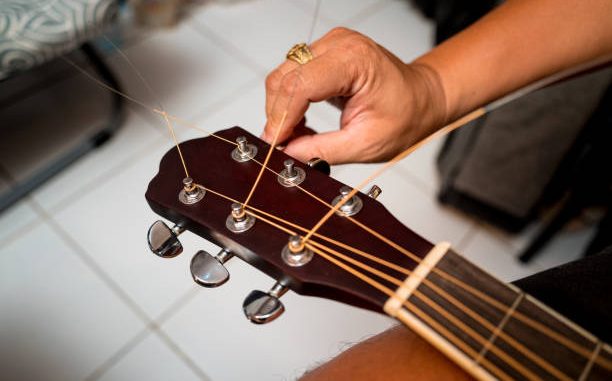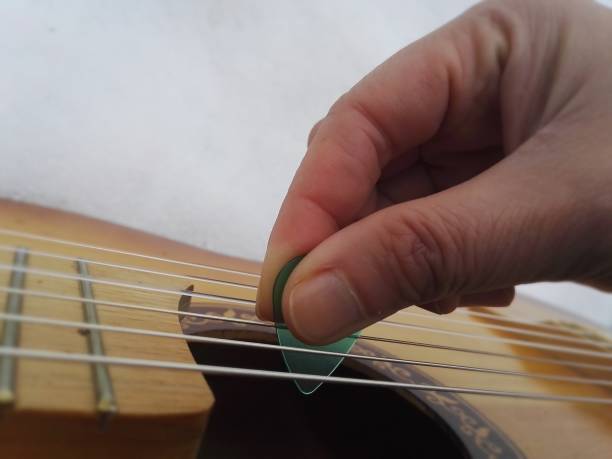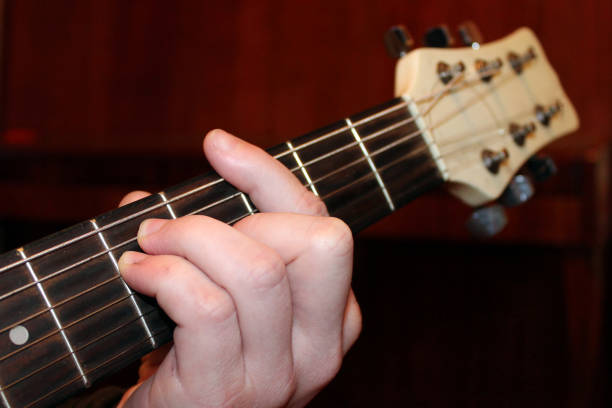
How to Turn Scales into Chords on Guitar
Practicing How to Turn Scales into Chords on Guitar can flourish a vast number of opportunities to create your own music, play it in a freestyle way, and learn more about music theory. In this article, we will focus on how to develop the ability to turn scales into chords and offer advice and tips that will prove useful on your instrument.

In the next session, I will be discussing how the two, scales and chords, are connected.
When wandering around How to Turn Scales into Chords on Guitar, it is advisable to regard scales as materials from which chords are derived. Every note in a scale can also be used as a root, and over it, other notes of the scale are added to form chords of various types.
The Basic Process: Triads
- Choose a scale (e.g., C major scale: C, D, E, F, G, A, B).
- Choose a starting pitch (in this case we’ll pick C).
- Proceed from the first note in the scale, which is your root note (E), and count up to the third note in the scale.
- Build the fifth note in the scale from your root note; this is what it looks like:
Exploring Seventh Chords
But when you get confident at such triads, you can get to know more about How to Turn Scales into Chords on Guitar by clicking more information about seventh chords. They play an important role in increasing the richness and intellectuality of the playing. To create a seventh chord:
- Start with your triad (for example, C E G).
- Conventionally, augment 7th is added to the seventh note of the scale counting from your root (B).
This is what gives you the C major seventh chord notes that are enumerated in the diagram above as C, E, G, and B. When applied to other scale degrees, different forms of seventh chords may be built, such as the dominant, minor, and half diminished sevenths.
Scale degree: its significance
Knowledge of scale degrees is very important when studying How to Turn Scales into Chords on Guitar. Each note in a scale has a specific function:
- Tonic (1st degree)
- Supertonic (2nd degree)
- Mediant (3rd degree)
- Subdominant (4th degree)
- Dominant (5th degree)
- Submediant (6th degree)
- Leading Tone (7th degree)
By stacking chords on each of these scale degrees, you will attain a full harmonic structure of the particular key. This knowledge is important when it comes to composing as well as illuminating the quality of a particular chord progression.
The Application of the Concept at Different Scalened Levels of Control
Even though we have leaned mainly on the major scale, the process of How to Turn Scales into Chords on Guitar can be applied to any scale. Let’s explore a few examples:
Minor Scales
As with minor scales, the process is actually the same, though the chords to be produced will have a different quality because of the third degree of the scale.
Pentatonic Scales
It is also important to state that with pentatonic scales, with their five tones, it is possible to create chords. Oh, they don’t necessarily result in traditional triads, but the varieties obtained are definitely pleasable, open sound chords, especially suitable for rock and blues.
Modal Scales
Studying on modal scales will definitely have a positive impact on the number of chords you know. The major scale has modes such as Dorian, Phrygian, Lydian, etc., and each of these modes will create its own set of chords whenever you’ve processed the concept of turning scales into chords.
Practical Application: Chord Progressions
They get especially useful when it comes to creating the How to Turn Scales into Chords on Guitar of the chords. Understanding which chords are likely to occur in a scale means that the chosen progression sounds good and makes musical sense. Here’s a simple exercise:
- Select a key you want to write in, for instance, G major.
- Construct a third on each degree of the scale.
- Play around with the different possibilities of these chords.
This way the various progressions are derived from the particular scale where you will want harmonic conformance when engaged in playing.
Writing with Arpeggios to Refer Between Scales and Chords
Arpeggios are essential in comprehending How to Turn Scales into Chords on Guitar. What, then, is an arpeggio? The term refers to a sequence of chord notes played one after the other instead of concurrently. Practicing arpeggios can help you:
- Imagination of chords related to or lying inside the given scales.
- Learn more than the common chord tones.
- He wants to create even more melodic solos that state chord changes.
Arpeggio studies are in fact like playing vertical, ‘chordal’, concepts horizontally or scalar.
Advanced Concepts: Extended Chords
It’s when you progress further in How to Turn Scales into Chords on Guitar that you can extend chords. These chords build up from the seventh chord to the 9th, 11th, and even 13th. To create extended chords:
- Start with a seventh chord.
- Go on adding thirds from the scale.
For instance, some C major ninth chords include C-E-G-B-D. These extended chords can fit very well into your playing and create extended harmonies.
Hall’s list of suggestions toward the scale-to-chord conversion technique
To truly internalize the process of How to Turn Scales into Chords on Guitar, consider these practical tips:
- Practicing chords from scales in all the keys
- The way towards increased speed and fluency is to practice with the help of a metronome.
- Think about major and minor scales as forms of chord progression and identify how songs employ those chords.
- Try out designing your personal progressions and pieces.
- The best skill for this task is to try to attempt to name chords by ear and relate them back to the parent scales.
Conclusion
Playing with intonation How to Turn Scales into Chords on Guitar is something that can be learned, and learning to master How to Turn Scales into Chords on Guitar is a simple technique that will significantly enhance the sound and feel of the music.

That is why, by starting with the most elemental of triades and gradually moving on to more complex ones, you will develop a very strong and practical knowledge of harmony. Just remember, this is a process; it’s a process, so don’t rush, practice every day, and don’t be shy to try something new. And as a newcomer to scales and chords, you will observe your play progressing more creatively. This makes playing more rewarding, expressive, and satisfying.
FAQs
On average, how many months and years does it take to gain fluency in scale to chord patterns on guitar?
Some people take a short time to gain mastery when it comes to translating scales into chords on a guitar. In a matter of a few months, most guitarists will be able to grasp the fundamental concepts as long as they are consistent with their practice.
Is it possible to generalize the described procedure to play on other instruments than the guitar?
Absolutely! Although we have primarily been discussing How to Turn Scales into Chords on Guitar, this is a key concept to music theory and can be used with any harmonic instrument. Players of the piano are especially known to make use of this method regularly.
Access the free trial page
Click this link to access the GuitarTricks.com Free Trial page >>
Click here to access the GuitarTricks.com Free Trial >>
Leave a Reply